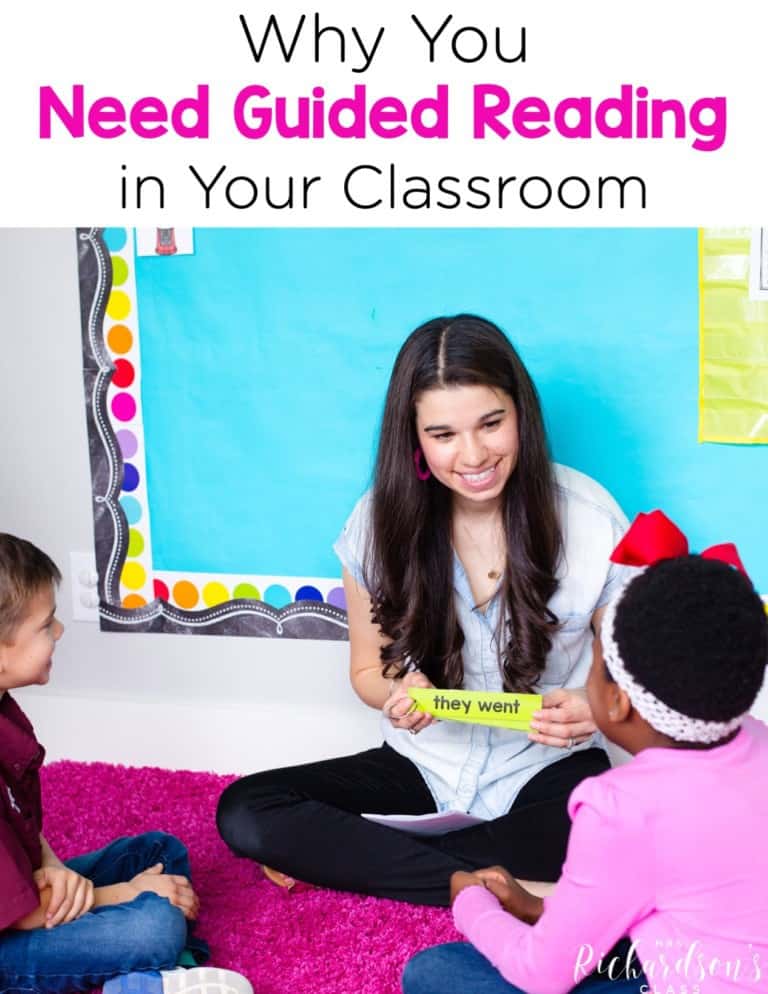

The number one question and concern I get is that teachers say they don’t have time for reading small groups. You have at least 22 students to manage in your classroom. You have mandatory things you have to fit into your reading block from your school or district. You have testing to do.
I get it!
Here’s my response – you don’t have time to not do reading small groups.
Reading small groups gives you small group time to work intensely and intentionally with your students to really boost their reading skills. This is when you can get a peek into how students are thinking while they read, what strategies they use, and what they need to work on.
Getting started with guided reading will help you push your readers forward with a strong foundation of reading skills.
But how can you make time for reading small groups when you don’t feel like you even have time to do what you are already doing? I’m going to share some of my secrets to making time for reading small groups to help you squeeze it in.
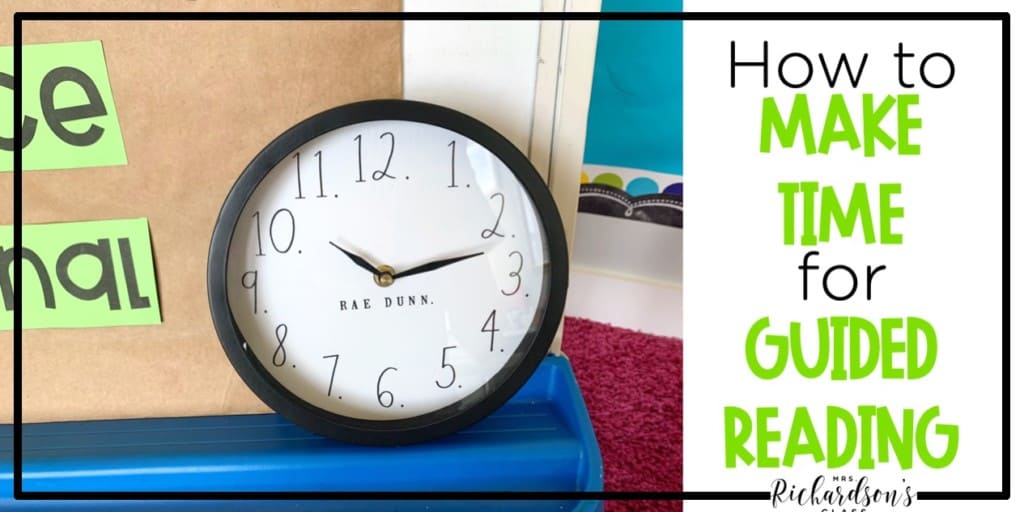
If you don’t have much time during your literacy block to work in reading small groups, or if you’re not sure if you can get two to three groups in, try rearranging your reading small group schedule.
For example, if there’s something in word work that many students struggle with, try doing this as a whole group outside of reading small groups. Word work is usually about five minutes per group, so that time can add up! You can find a few more scheduling tips in my post HERE.
This might be one of my favorite ways to utilize volunteers. If you have parents that want to come help, listen up!
Before students come to the reading small group table, have volunteers work with your students as a warm-up for small group. Here are a few things they could do with students:
You could also have volunteers do the comprehension skill practice or quick write after reading, especially if you have any volunteers with teaching experience.
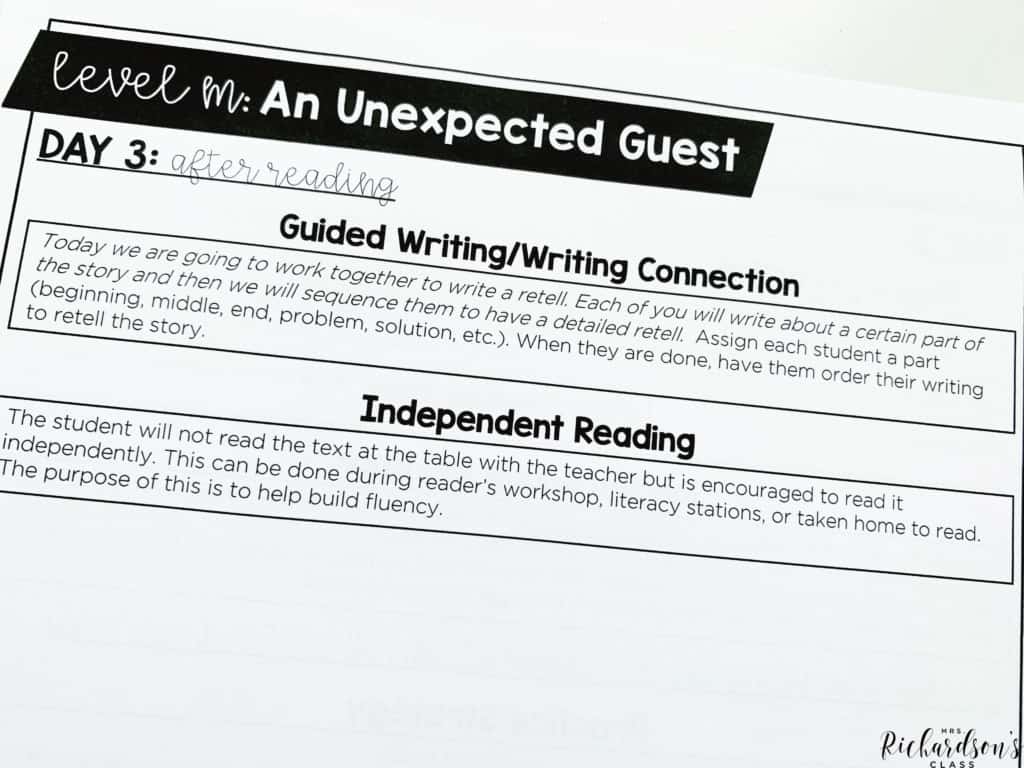
(By the way, if you have purchased any of my Guided Reading Kits, they have scripted lesson plans that would make it super easy to have a volunteer do just this!)
Depending on your grade level, you might have things you have to do in addition to balanced literacy components. Think about what you can do outside of your literacy block.
For example, if you have to administer sight word tests each week, maybe you can do them during whole group restroom breaks or during computer lab time.
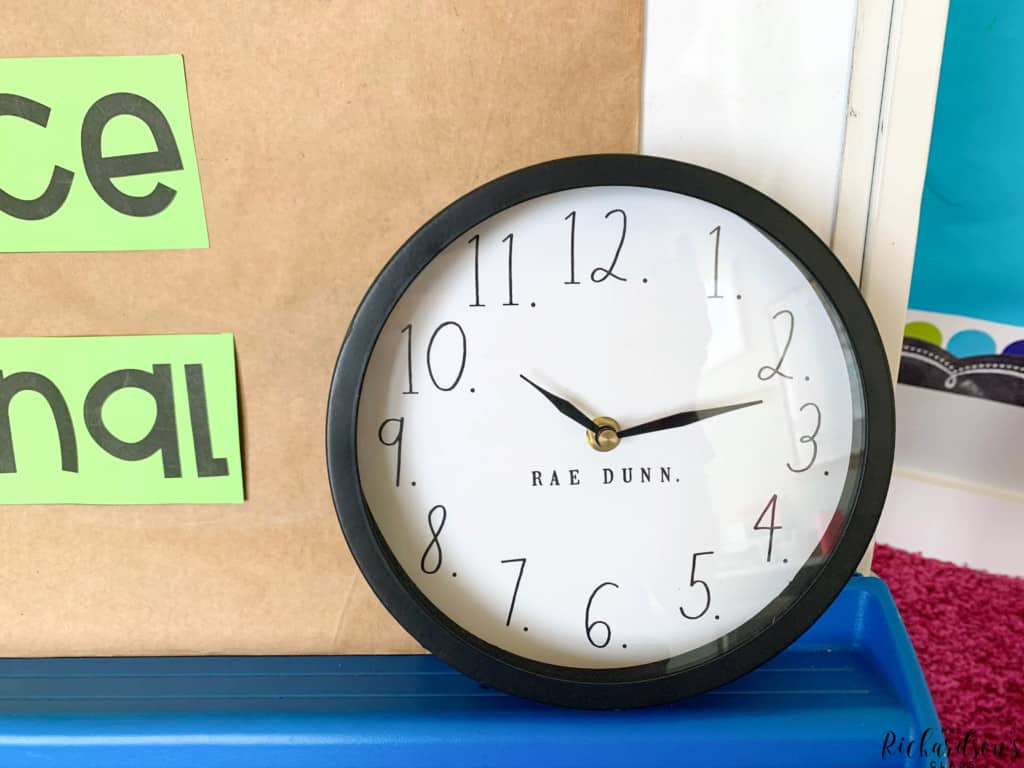
Try to think outside of the box on how to use time creatively.
When I started to get creative, I found plenty of time to implement reading small groups.
I know we teachers plan and plan, but make sure you plan and grab everything you need for your reading small groups before it’s time to start. This will save you precious minutes and make small group much less stressful. Have your materials organized and guided reading tools easy to grab.
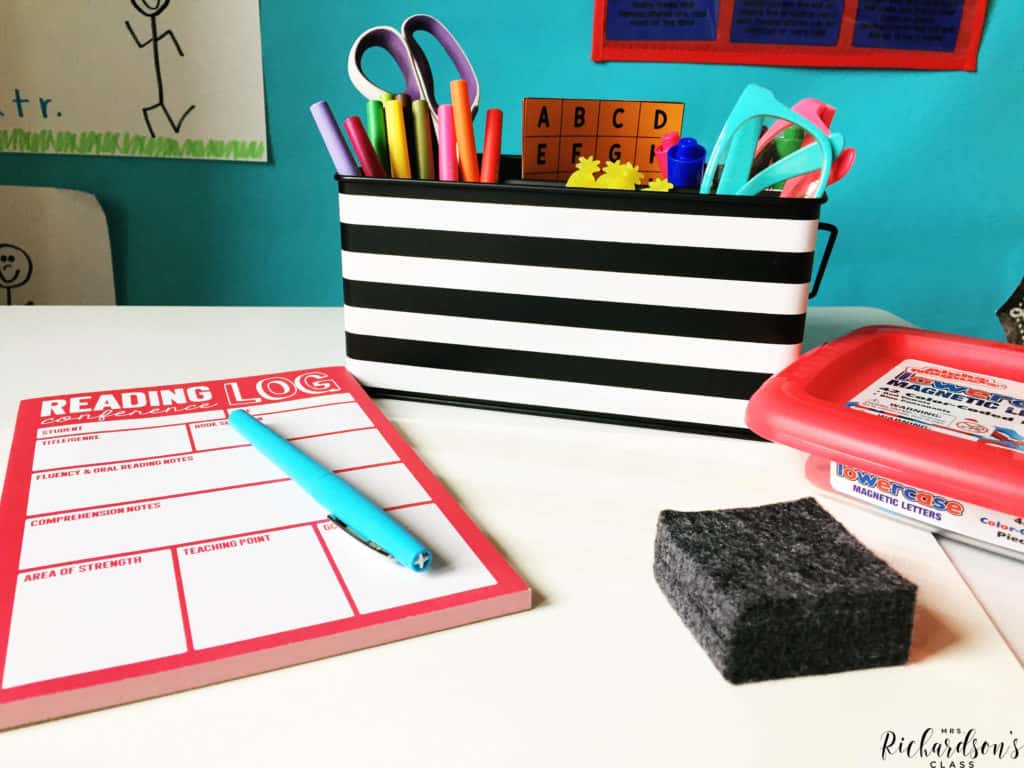
First, write out a minute-by-minute schedule. Making a schedule on paper might reveal how you can work reading small groups into your literacy block. After you make a schedule, try sticking to it for a time period to give you a chance to work out the kinks. For example, if you have 90 minutes for your reading block, it could look like this:
You can easily do your interactive read aloud at the end of your morning meeting, before writer’s workshop, during science and/or social studies, or during your reading block if you have time!
Remember your schedule can be flexible – just give yourself enough time to try one schedule before you switch it up.
You’ll be able to figure out what was working and what wasn’t working to make the “perfect for you” schedule faster!
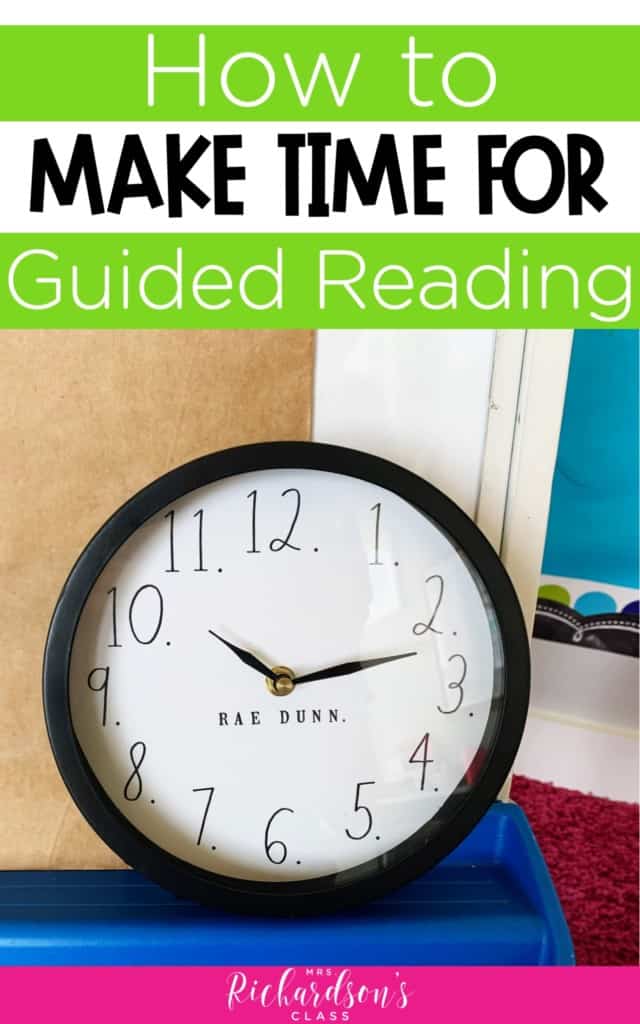
pin it
Don’t believe the misconception that if you have too many kids, you don’t have time for reading small groups. Making time for reading small groups will help you be more efficient in your reading instruction and reach more students at the same time. It’s a win-win!
Are you looking to learn more about bringing the science of reading research to your reading small groups? Join me in this FREE workshop!
I’d love to hear from you! Have you tried any of these tips in your literacy block?

Want to use the latest research to boost your readers during small groups? This FREE guide is packed with engaging ideas to help them grow!

I’m a K-1 teacher who is passionate about making lessons your students love and that are easy to implement for teachers. Helping teachers like you navigate their way through their literacy block brings me great joy. I am a lifelong learner who loves staying on top of current literacy learning and practices. Here, you’ll find the tools you need to move your K-2 students forward!


| Cookie | Duration | Description |
|---|---|---|
| cookielawinfo-checkbox-analytics | 11 months | This cookie is set by GDPR Cookie Consent plugin. The cookie is used to store the user consent for the cookies in the category "Analytics". |
| cookielawinfo-checkbox-functional | 11 months | The cookie is set by GDPR cookie consent to record the user consent for the cookies in the category "Functional". |
| cookielawinfo-checkbox-necessary | 11 months | This cookie is set by GDPR Cookie Consent plugin. The cookies is used to store the user consent for the cookies in the category "Necessary". |
| cookielawinfo-checkbox-others | 11 months | This cookie is set by GDPR Cookie Consent plugin. The cookie is used to store the user consent for the cookies in the category "Other. |
| cookielawinfo-checkbox-performance | 11 months | This cookie is set by GDPR Cookie Consent plugin. The cookie is used to store the user consent for the cookies in the category "Performance". |
| viewed_cookie_policy | 11 months | The cookie is set by the GDPR Cookie Consent plugin and is used to store whether or not user has consented to the use of cookies. It does not store any personal data. |
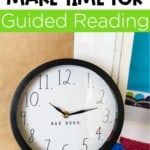
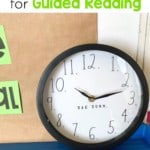

3 Responses
Hi,
I was looking at your page and love it. It gave great advice how to do guided reading. I was wondering where did you find that reading conference log paper? It is in the picture where you posted have materials prepared. I look forward to hearing from you. Also thanks for sharing your advice and look forward to hearing from you and checking out the rest of your site. Thanks for taking time to read this. Take care.
Hi Kari! I got it YEARS ago from Blair Turner Papers. I’m not sure she is still in business. Here is her site! She is super sweet and is a teacher herself! 🙂 http://www.blairturnerpaper.com/all-paper-goods
Thanks soo much I will check it out. Take care! =)